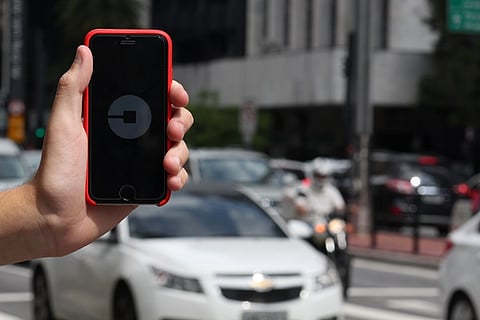

India has added 20 million cars in the last 15 years. And as per the Ministry of Road Transport and Highways, the average occupancy of a car is just 28%. Meaning, while a car can carry 4 people, it only carries 1.15 persons.
No surprise then that the country has been ailing with traffic congestions and air pollution. The severity of the situation has come to light recently after air pollution in India crossed alarming levels. And it is no secret that the growing number of private vehicles and the emission from them is a major contributor to it.
The government, too, has been taking steps to try and curb the air pollution. Promoting public transport and stipulation of BS IV and BS VI emission norms are a few such examples. Another phenomenon that has been catching up globally is that of carpooling. The math is simple: if four individuals using a car to travel decide to carpool into one car, imagine the number of vehicles that will go off the road.
Cab aggregators in India, too have started carpooling and ride-sharing features to promote this. But Uber thinks it has seen the future and had decided to go one step further. The global giant, who we would expect to be the hallmark of private transport and eventually kill public transport, is instead looking to complement and back the public sector.
“Over time, we harnessed our technology to solve for some of the most complex problems and urban infrastructure challenges that cities face today,” says Shweta Rajpal Kohli, head-Public Policy, Uber India & South Asia.
.jpg?w=640&auto=format%2Ccompress)
The problem Uber is trying to solve is that of last mile connectivity. And complementing public transport is the company’s solution to this problem. Reduction of traffic congestion and CO2 emission is the end result of this solution, Kohli adds.
In fact, promoting shared mobility and a shift from personalized transport to public transport and ensuring optimal asset utilization are two of the underlying principles of the taxi policy guidelines proposed by the committee constituted by the Ministry of Road Transport and Highways to promote urban mobility in December 2016.
Uber pool is currently functional across seven cities in India, with Pune being the latest addition. And since its launch in the country, currently 31% of car rides happen on Uber Pool. According to Kohli, in Bengaluru – Uber’s most popular Pool destination – over a million kilograms of CO2 emissions and 9.4 million kilometers of unnecessary driving has been prevented. Currently, the company is expanding its operations in Kolkata to include districts in the outskirts as well.
However, several experts and users have pointed out, as was evident during the latest drivers’ strikes in Delhi and Bengaluru, the roads saw much lesser traffic when Uber and Ola were off the road. In the short run, Uber and Ola have only contributed in adding more cars to the roads.
.png?w=640&auto=format%2Ccompress)
Uber Moto, the company’s motorcycle-ride-hailing feature, is another thing that the company is growing in the Indian market to reduce congestion and increase last-mile connectivity. Currently functional in Gurgaon, Hyderabad and Faridabad, the idea behind it is to get office-goers to the last mile. The company has also partnered with the Hyderabad Metro Rail to extend the reach of the bike sharing service.
In Bengaluru, too, Uber has tied up with the Bangalore Metro Rail Corporation to provide last mile connectivity. Booking counters too has been opened at metro stations for those who do not have access to the app. This, for the company is a continuous process. “We continually engage with governments to identify areas where we can support and strengthen public transportation systems. To that end, we have several memorandums of understanding with state governments and transit authorities,” Kohli says.
The future of urban mobility, Uber says, is ridesharing. An important aspect to this is to bring private vehicles into the loop – a model that is extremely popular is the US. It has been a strong advocate of this and has been engaging with the government to overcome legal hurdles involved with private ridesharing.
As per a report in Mint, Uber India president Amit Jain been speaking with regulators to seek an amendment to the Motor Vehicles Act, 1988, that would allow ride sharing with private cars.
Despite a trial already taking place in Punjab last year, regulatory hurdles are stopping Uber from rolling out this feature nationally.
But the government is not entirely against this. The first step in this direction has been the Central government’s recommendations in the taxi policy guidelines. It recognizes that each shared car can get anywhere from nine to thirteen cars off the road. Liberalising regulations is also extensively talked about in the guidelines.
“It is also recommended that if any aggregator wishes to deploy digital or electronic platform to improve productivity and utilization of the vehicles and offer better convenience to the customers, then they may be permitted to operate under Section 93 of The Motor Vehicles Act,” the guidelines state.
Uber is pinning its hope on a positive response from the government. “It is our hope that governments respond to the challenges and opportunities discussed in the guidelines and take a progressive stand for the future of our cities. The answer to problems of congestion and pollution lies on making every journey a shared journey. That vision can be realised only if we get private vehicles into the fold of ridesharing,” Kohli says.
Three years after entering India, Uber says it has only scratched the surface. Its purpose in India to make the future of urban mobility a reality by putting more people in fewer cars. “There is a real alternative to a world that moves like a jam and looks like a parking lot and we are committed to effecting that change,” Kohli says.
Image: Núcleo Editorial